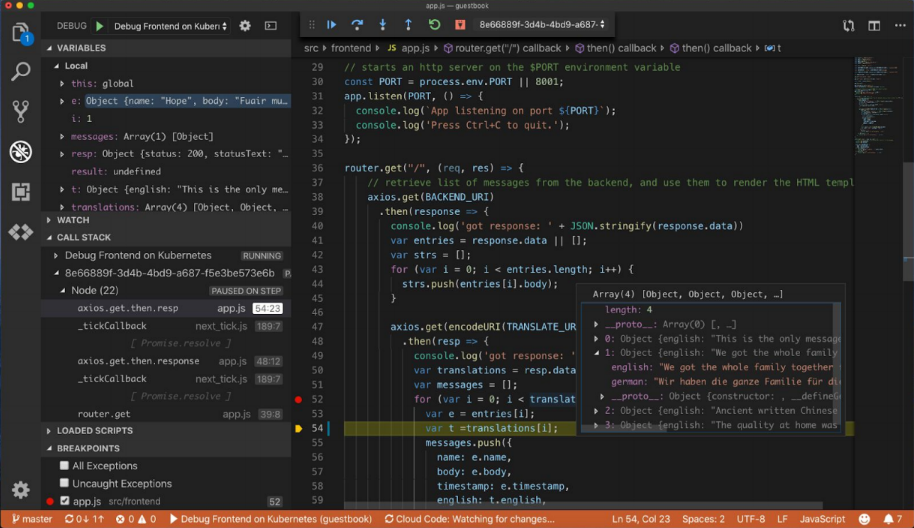 CLOUD
CLOUD
 CLOUD
CLOUD
 CLOUD
CLOUD
Google LLC wants developers to build more of their applications in Kubernetes-based containers hosted on its cloud.
To encourage that, today it’s introducing a new set of plugins called Google Cloud Code, which allows apps built with Integrated Development Environments such as IntelliJ and Visual Studio Code to be deployed to Kubernetes more easily.
IDEs such as IntelliJ and Visual Studio Code are the most popular tools used to write application code, and Google admits that’s not likely to change anytime soon. But IDEs can be troublesome because they’re designed for writing “local applications” rather than cloud-hosted ones. The problem is that local and cloud environments have many differences, and that can lead to errors when using IDEs to build apps for the cloud.
Cloud Code is meant to eliminate these errors, Google Product Manager Sean McBrean explained in a blog post.
“Cloud Code extends VS Code and IntelliJ to bring all the power and convenience of IDEs to developing cloud-native Kubernetes applications,” McBrean wrote. “With Google’s command-line container tools like Skaffold, Jiband Kubectl under the hood, Cloud Code gives you continuous feedback on your project as you build it, extending the local edit-compile-debug loop to any local or remote Kubernetes environment.”
McBrean explains that there are lots of new concepts that developers who are unfamiliar with Kubernetes need to understand. Cloud Code helps with this by providing numerous samples of Kubernetes deployments that are preconfigured for debugging, building and deploying apps, so developers don’t need to worry about the initial set-up and configuration of their apps.
Cloud Code also makes it easier for developers to integrate Google’s application programming interfaces with their apps, so they can take advantage of Google services such as Maps. Further integrations with Google DevOps services such as Cloud Build and Stackdriver are included out of the box as well.
“For example, once your code is ready to deploy, simply do a pull request or commit, which triggers Cloud Build to automatically build, test, and deploy your application,” McBrean said.
“To get developers on platform, vendors need to make it either more productive and or allow developers to bring their favorite tooling,” said Holger Mueller, principal analyst and vice president of Constellation Research Inc. “Google does both with the IntelliJ and VSCode plugjns for Google Cloud code. If this will sway more developers to Google Cloud Code, we will know when the IDE surveys are out in a few months.”
THANK YOU